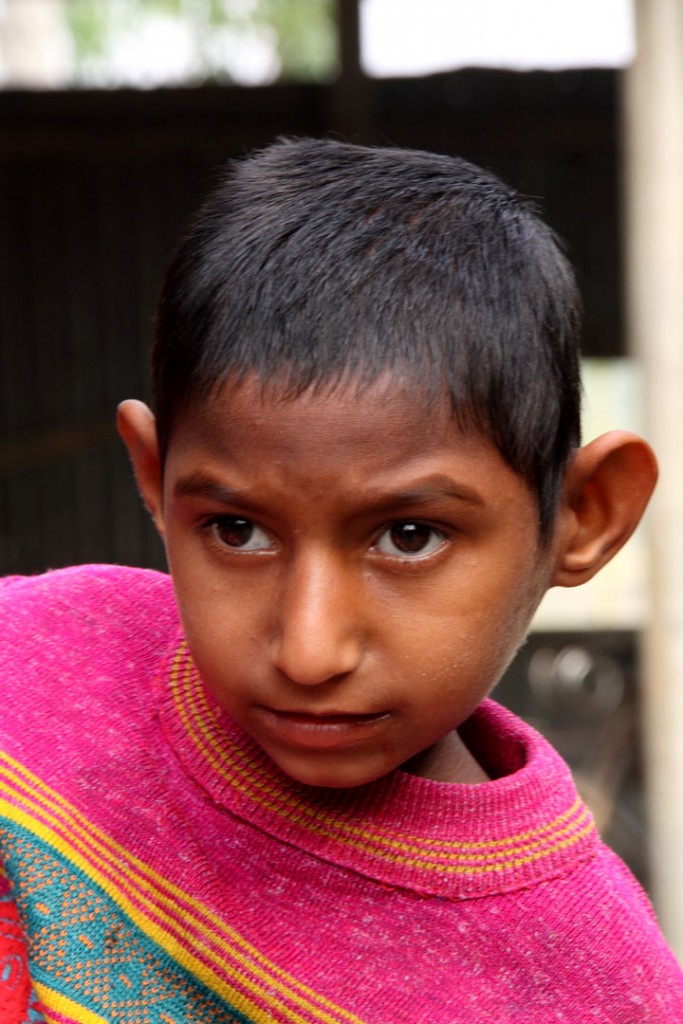 The Asian Childhood Cataract-Special Interest Group (ACC-SIG) is a platform for eye care professionals in Asia including paediatric ophthalmologists, eye care managers, policy makers, researchers where everyone can share their experiences and exchange views for better management of childhood cataract. The primary goal of the forum has been set to develop a standard manual for the detection and management childhood cataract in Asia with the help of the forum members.
The Asian Childhood Cataract-Special Interest Group (ACC-SIG) is a platform for eye care professionals in Asia including paediatric ophthalmologists, eye care managers, policy makers, researchers where everyone can share their experiences and exchange views for better management of childhood cataract. The primary goal of the forum has been set to develop a standard manual for the detection and management childhood cataract in Asia with the help of the forum members.
We have initiated ACC-SIG with the support of Dark and Light Blind Care, Netherlands. ACC-SIG membership policy has been set free for all involved in eye care who envision offering Asian children a world free from the curse of blindness caused by cataract.
Vision
- To develop and publish a handbook for childhood cataract detection and management standard for all Asian countries with the input from forum members. And to disseminate the handbook to end-users in different Asian countries and internationally.
Why join here
- To be an important part in the movement of eliminating blindness caused by cataract.
- To be a significant contributor of the first ever manual for childhood cataract in Asia.
- Special Interest Group members will be invited as participants in an “Experts workshop on childhood cataract in Asia” scheduled to be held in Dhaka, Bangladesh on August. The proposed manual for Childhood cataract in Asia will be an outgrowth of that workshop.
- At least 12 participants from different Asian countries will receive practical hands-on training by 2013.
- All the forum member will receive a free copy of the manual.
Cataract in Asia
Asian region has been the hardest hit with two third of world’s cataract blind children which is treatable. A vast majority of them remain undetected by health professionals until they reach the age of 8 to 10 years, by that time many of them develop irreversible visual impairment, amblyopia or lazy eye. There is a dire need to utilize effective and efficient method to identify cataract blind children from rural parts of Asia – particularly in large population Asian countries – China, India, Pakistan, Bangladesh, and Indonesia etc. There is also a need to establish a standard practice guideline for the clinical management of childhood cataract in Asian setup. Strategies need to be developed to ensure long term follow-up – in Asian countries, where vast majority of the population lives in rural areas and majority of eye care facilities are in few big cities. There are good example of projects in different parts of Asian region, which needs to be shared, synthesised and documented so that more effective and large scale programme can be developed in Asian countries to tackle childhood cataract and to eliminate childhood blindness from this cause.
Facts and figures
- there are an estimated 500,000 new cases each year of childhood blindness – roughly one per minute
- blindness in children is often preventable if communities and parents become aware of the causes
- without early intervention for cataract blindness children may go blind permanently
- blinding conditions increase child mortality – 50 per cent of children who become blind die within two years
- 90 per cent of children who are blind don’t go to school
- Eliminating childhood blindness will lead to a greater reduction in the number of ‘blind years’ experienced by adults
Suggested Readings
1. Prevalence and Causes of Severe Visual Impairment and Blindness Among Children in the Lorestan Province of Iran, Using the Key Informant Method
Razavi, H.; Kuper, H.; Rezvan, F.; Amelie, K.; Mahboobi-Pur, H.; Oladi, M.R.; Muhit, M.; Hashemi, H.
Ophthalmic Epidemiology, 2010; 17(2):95-102
Link: http://www.ncbi.nlm.nih.gov/pubmed/20302431?dopt=Abstract
2. Productivity of key informants for identifying blind children: evidence from a pilot study in Malawi
Kalua, K.; Patel, D.; Muhit, M.; Courtright, P.Eye, 2009; 23(1):7-9
Link: http://www.ncbi.nlm.nih.gov/pubmed/18344959?dopt=Abstract
3. Causes of blindness among children identified through village key informants in Malawi
Kalua, K.; Patel, D.; Muhit, M.; Courtright, P.
Canadian Journal of Ophthalmology-Journal Canadien D Ophtalmologie, 2008; 43(4):425-427
Link: http://www.ncbi.nlm.nih.gov/pubmed/18711455?dopt=Abstract
4. Causes of severe visual impairment and blindness Bangladesh -A study of 1935 children.
Muhit, M.A.; Shah, S.P.; Gilbert, C.E.; Foster, A.; Br J Ophthalmol, 2007; 91(8):1000-4
Link: http://www.ncbi.nlm.nih.gov/pubmed/17360736?dopt=Abstract
5. The key informant method – a novel means of ascertaining blind children in Bangladesh.
Muhit, M.A.; Shah, S.P.; Gilbert, C.E.; Hartley, S.D.; Foster, A.; Br J Ophthalmol, 2007; 91(8):995-9
Link: http://www.ncbi.nlm.nih.gov/pubmed/17431019?dopt=Abstract
6. Prevalence and causes of childhood blindness in camps for displaced persons in Khartoum: results of a household survey.
Zeidan, Z.; Hashim, K.; Muhit, M.A.; Gilbert, C.;
East Mediterr Health J, 2007; 13(3):580-5
Link: http://www.ncbi.nlm.nih.gov/pubmed/17687831?dopt=Abstract
7.Childhood cataract: home to hospital.
Muhit, M.A.; Community Eye Health, 2004; 17(50):19-22
Link: http://www.ncbi.nlm.nih.gov/pubmed/17491801?dopt=Abstract
8. A review of the epidemiology and control of childhood blindness
Muhit, M.; Gilbert, C. Tropical Doctor, 2003; 33(4):197-201
Link: http://www.ncbi.nlm.nih.gov/pubmed/14620419?dopt=Abstract
9. How should blindness in children be managed?
Bowman RJ. Eye (Lond). 2005 Oct;19(10):1037-43.
Link: http://www.ncbi.nlm.nih.gov/pubmed/16304582
10. Causes of childhood blindness in the northeastern states of India
Bhattacharjee, H.; Das, K.; Borah, R.R.; Guha, K.; Gogate, P.; Purukayastha, S.; Gilbert, C. Indian Journal of Ophthalmology, 2008; 56(6):495-499
Link:http://www.lshtm.ac.uk/publications/list.php?inpress=1&filter=list&value=18974521&view=abstract
11. Causes of blindness and visual impairment in Pakistan. The Pakistan National Blindness and Visual impairment Survey.
Dineen, B.; Bourne, R.R.; Jadoon, Z.; Shah, S.P.; Khan, M.A.; Foster, A.; Gilbert, C.E.; Khan, M.D.; Br J Ophthalmol, 2007; 91(8):1005-10
Link: http://www.lshtm.ac.uk/publications/list.php?inpress=1&filter=list&value=17229806&view=abstract
12. Childhood blindness in the context of VISION 2020–the right to sight.
Gilbert C, Foster A. Bull World Health Organisation. 2001;79(3):227-32. Epub 2003 Jul 7.
Link: http://www.ncbi.nlm.nih.gov/pubmed/11285667
Watch: Childhood cataract detection and management in Asia
